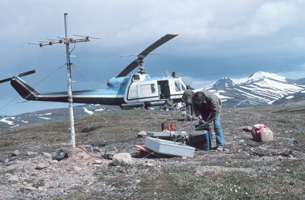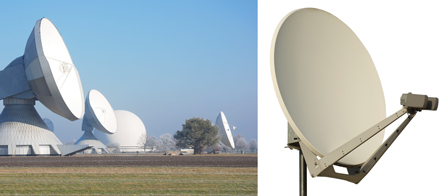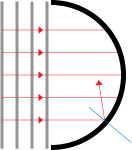Module 8—Mechanical Waves
 Reflect and Connect
Reflect and Connect

Photo courtesy Captain Budd Chirstman, NOAA Corps
In seismic exploration, a small charge of TNT is ignited, causing seismic waves to propagate downward into Earth. Earth itself is the medium in which the seismic waves travel. Each layer of Earth, composed of various materials, will tend to change the speed of the seismic waves. Therefore, when a seismic wave encounters a boundary between two different media, some of the wave energy is reflected according to the law of reflection, while some of the wave energy is transmitted.
Measuring the time it takes for the reflected waves to return to the surface (where they are sensed by the geophone) indirectly indicates the depth of a boundary. This indicates a change in the type of material making up the subsurface. Using the direction of the wave, the location of the boundary can be identified. Understanding the location of the boundaries and the relative impedance (resistance to the waves) of the materials making up these boundaries allows a geologist to estimate the properties of the material causing the reflection. The law of reflection allows the geologist to apply similar analyses in a variety of locations and circumstances, helping us understand what lies deep in the ground beneath our feet. Can similar techniques be applied to explore the sea floor using sound waves instead of seismic waves? Check it out on the Internet by using the search terms reflection seismology deep water marine.
 Discuss
Discuss

left: © Manfred Steinbach/shutterstock
right: © Gyula Matics/shutterstock
The large satellite dish on the left can be used for astronomy and large-scale communications. The small satellite dish on the right is typical of most home satellite TV and/or Internet services. Notice the shapes of these dishes are similar. What does this shape have to do with the law of reflection? In this lesson you looked at how waves reflect off a straight surface. But, what happens when a wave approaches a curved surface? The following diagram shows waves approaching a curved surface. Several incident rays are drawn. Draw in the reflected rays. Hint: Draw in the normal for each ray that is hitting the surface. Then apply the law of reflection in order to draw the reflected rays. The bottom one has been done as an example.

In the discussion forum, explain why all satellite dishes have a similar shape and where you would expect all the reflected rays to intersect. What would you position at the point where all the reflected rays intersect? Why?
 Reflect on the Big Picture
Reflect on the Big Picture
Each of the Reflect on the Big Picture sections in this module will deal with waves and transferring energy. To help reinforce your learning from this lesson, complete at least one of the following reflection activities:
- Think about your experiences with sound. Have you experienced reflection of sound waves in an interesting manner? Create an amusing story relating to reflected sounds (perhaps an echo).
- When the Jubilee Auditoriums in Edmonton and Calgary were refurbished recently, there was great consideration given to the acoustics in the halls. Does the reflection of sound waves make the listening experience better or worse? Do some research to answer this question, and find out how you can increase or decrease reflection in a music hall to create a better listening experience for the audience.
Store your completed reflection in your Physics 20 course folder.
 Module 8: Lesson 2 Assignment
Module 8: Lesson 2 Assignment
Remember to submit the Module 8: Lesson 2 Assignment to your teacher.